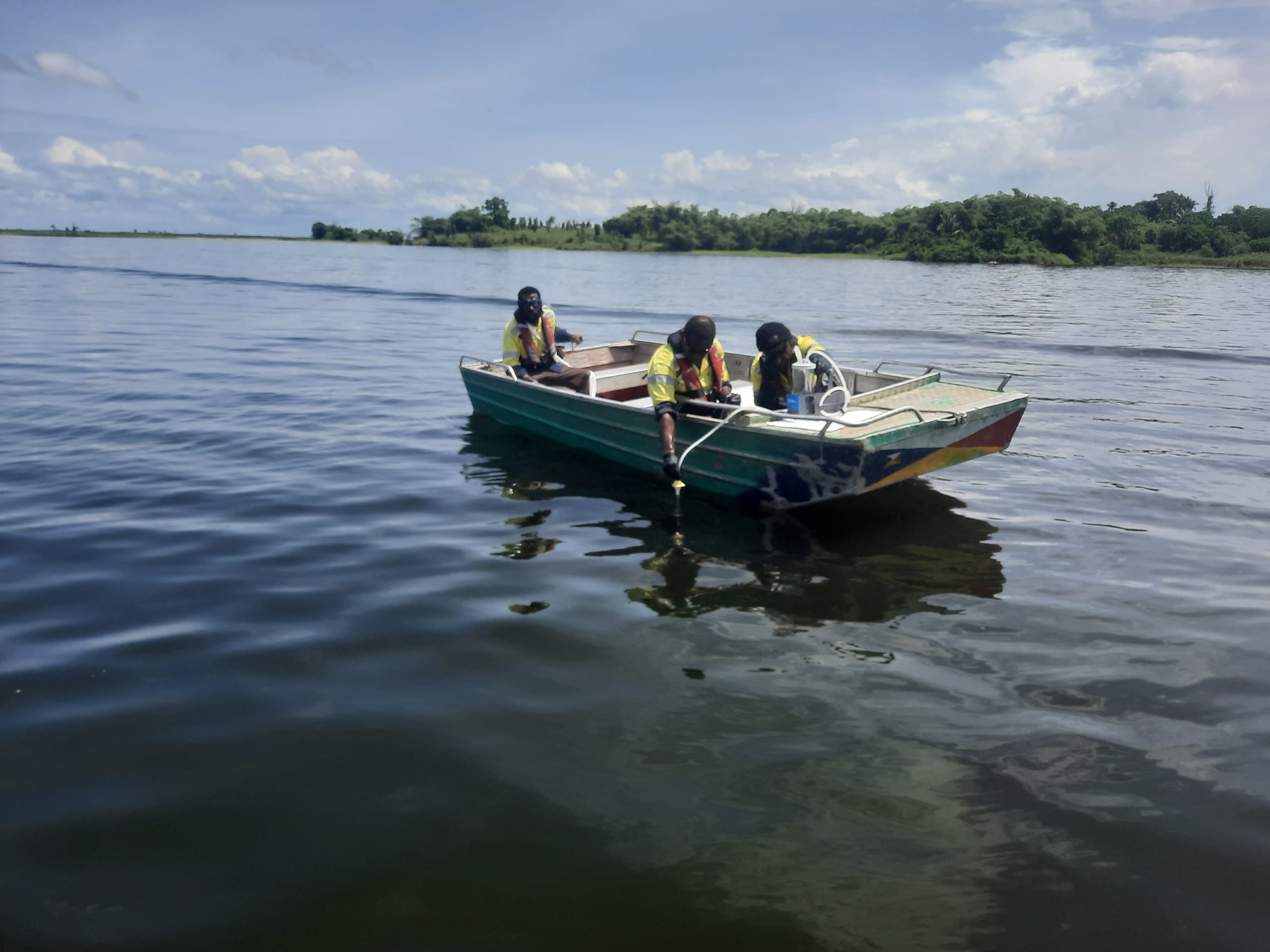Ok Tedi Mining Limited (OTML) is conducting a first of its kind environmental DNA (eDNA) study in Papua New Guinea as a trial to monitor and track fish species in the Ok Tedi and Fly River systems.
The study is a collaboration between OTML’s Environment Department and the James Cook University in Australia.
Superintendent Riverine Management Markson Yarrao, says e-DNA is a technique used to identify species present in a given environment by analysing their genetic material. While DNA analysis is not new, its use in environmental monitoring has taken a giant leap forward.
He said all livings things leave tiny traces of DNA in the environment. In aquatic environments, fish species shed cells, mucus and secretions, body fluid, scales, and skin fragments, all containing their genetic material.
“This genetic material floats in the water, where they can be collected by filtration of water samples and analysed in a specialized lab to reveal which species are present. The eDNA method can target one or multiple species, making it a versatile monitoring tool,” said Mr Yarrao.
“The new study is designed to track species across the entire Fly River ecosystem, complementing traditional survey methods like fishing line, nets, electrofishing, and spearing. However, unlike these invasive techniques, eDNA does not harm the fish; only water samples are needed.”
He added “This non-destructive approach is important given the river systems aquatic environment. Due to mining activity and impact to the Fly River system, many fish species have migrated from the main river to smaller creeks and tributaries in search of refuge. Understanding these changes is crucial for future conservation efforts and post-mine closure rehabilitation.”
The James Cook University is providing expertise, field methods, and specialized resources to the trial study. The eDNA process involves, initially, extracting DNA information and developing a registry or gene bank for individual fish species known as barcoding.
OTML began field sampling by collecting both fish tissue and water samples from various locations along the Fly River system. To date, 33 fish tissue samples have been collected for barcoding. The genetic material in the water samples would be analysed and resultant DNA compared with those of the fish species.
“The use of eDNA by OTML to monitor fish species in the Fly River system is first of its kind in Papua New Guinea. We are grateful to our OTML Management for recognizing the importance of the eDNA study and for their support in funding this exciting initiative,” said Mr Yarrao.
Since 1982, OTML has been monitoring fish from a number of locations along the channels as well as the floodplain throughout the Ok Tedi and Fly River systems. Some fish species are no longer being caught at the monitoring sites, and it is believed they have taken refuge elsewhere in the system and should recolonise post mine closure as conditions improve.
OTML has initiated a 5-yearly fish species diversity survey of the Fly River system since 2006 and following three surveys (2006, 2012 & 2018), 140 species have been recorded, as well as identified refuge sites for fish, confirming OTML’s hypothesis that fish are moving out from the main river channel avoiding physical changes to their habitat conditions due to the mining operation. The eDNA study could further detect other species not captured by existing monitoring methods.
The eDNA study is part of OTML’s ongoing commitment to understanding and preserving the biodiversity of the Ok Tedi and Fly River systems. By collecting and analysing genetic data, OTML can gain a deeper understanding of the fish species populations and track changes over time.

